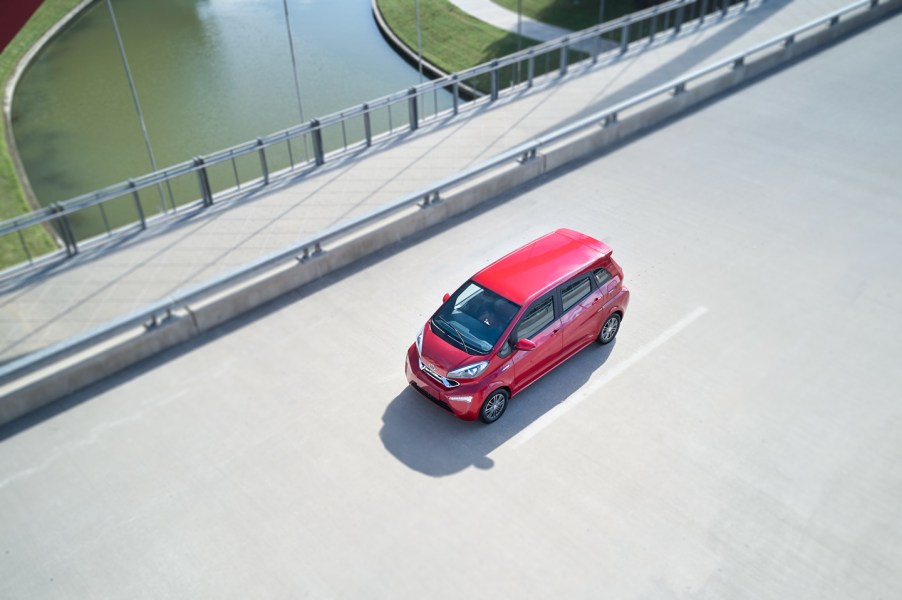
The Kandi K23: America’s Version of the Honda E
Announced back in 2020, the Honda E made waves in Europe as a small electric car. It would be a fun grocery-getter, a cute solution to the climate problem. But much to the dismay of American buyers, this spunky little EV won’t be coming to the states. The closest we’ve got is the Kandi K23, a small, cheap, Chinese electric car with some key advantages and significant drawbacks.

The Kandi K23 is small and cheap electric car
The two defining characteristics of the Kandi K23 are its size and its price tag. The wheelbase is 104 inches, 6 inches longer than the Honda E, both the K23 and the E have room for 4 passengers. The difference lies in the price. Starting at $28,000 before tax incentives, the K23 is one of the cheapest EVs on sale for the states. In comparison, the Honda E starts at $38,000. Granted, the K23 is cheap for a reason.
Under the hood, the K23 has a 49kw (that’s 65 hp) electric motor that can get you to a top speed of 72mph. Its EPA-rated range is just 113 miles. And while it does have a 10-inch touchscreen, rearview camera, and Bluetooth, that’s about all it has.
The Kandi K23 is a bare-bones electric car, whereas the Honda E features some nifty features, like a panoramic touchscreen with an “aquarium mode” so you can keep a digital fish on your dash. And that extra 10k gets you 25 more miles of range, a 90mph top speed, and above all else, the Honda nameplate.
Kandi’s reputation isn’t all that great

Unlike Honda, who’ve been selling motorbikes in America since 1949 and cars since 1969, Kandi is just breaking in. And they haven’t necessarily done a great job with that. For starters, there are questions as to whether or not the cars are safe.
Kandi has been making cars in China since 2007, and claims to have been certified by the National Highway Traffic Safety Administration. Only issue? There have been no NHTSA crash tests for the K23, nor are there any record of the car being tested in China. Kandi’s sales aren’t all accurate either, with 60% of the cars being sold to companies Kandi owns.
It’s unsure as to whether or not the Kandi cooperation will really establish itself in North America, their Kei car-based EVs may completely fall flat. But what about small, cutesy electric cars in general?
Will a small Honda E equivalent ever come to the states?

The somewhat unfortunate truth is that Americans buy bigger cars. There’s nothing wrong with that in principle, but if automakers wish to compete in one of the largest economies, they have to conform. Honda is doing just that by selling their small EV in places where small cars make sense. Europe’s roads aren’t as wide, and people driving large SUVs look rather outlandish. The same goes for people driving Smart cars in the states, you look and laugh a little.
But that isn’t to say all automakers have given up hope. Chevy is still committed to a smaller EV for the states with the Bolt, and Nissan still sells the Leaf. Neither are particularly sporty, but their designs are easier on the eyes. And they’re simple, small, and cheap in a sea of pricey SUVs. In other words, they might not be mainstream, but small electric cars out there.


